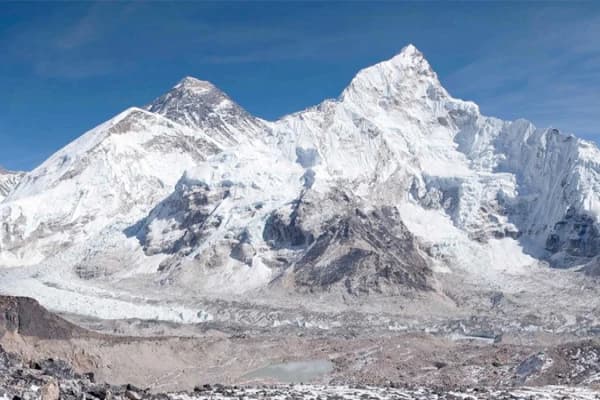Which is the Best Itinerary for Everest Base Camp Trek?
Different trekkers can have different travel programs and time durations to reach the Everest base camp. It is normal because a trek to EBC is a journey that requires expert planning and wise decisiveness. Nowadays, the EBC 10 days itinerary, 12 day itinerary and 14-day itinerary are widely popular. They are most commonly used ones and consider trekkers' fitness, health and mindset.
Among these, the 12 day itinerary is the most ideal and recommended Everest Base Camp trek duration for trekkers from around the world. It provides the right balance between time, acclimatization and safety. Most complete the trek comfortably in 12 days, as this plan allows the body to be gently adjusted at high altitude. The journey is exciting and rewarding in itself and this wise itinerary makes it totally achievable and worthwhile.
The distance to Everest Base Camp Trek is about 130 kilometers (80 miles) from Lukla to EBC and back. Trekkers usually walk 5 to 7 hours per day. In these trekking hours, they normally cover 10-15 km on a daily basis.
Everest Base Camp Trek 12 Day Itinerary Outline

As mentioned, this travel plan ideally mixes the trailing adventure with nature's magnificence and cultural immersion. Here’s a proper 12 day Everest Base Camp Trek itinerary outline.
Day 01- Kathmandu to Lukla Flight and Trek to Phakding – Everest Trek Start
- Kathmandu Altitude- 1,400 m
- Lukla Altitude- 2,840 m
- Phakding Altitude- 2,610 m
- Distance- Approx. 8 km
- Walking Time- 3–4 hrs
Day 02- Phakding to Namche Bazaar – Everest Base Camp Trek Highlights
- Phakding Altitude- 2,610 m
- Namche Bazaar Altitude- 3,440 m
- Distance- Approx. 11 km
- Walking Time- 5–6 hrs
Day 03- Namche Bazaar Acclimatization – Everest View Hike and Sherpa Culture
- Namche Bazaar Altitude- 3,440 m
- Optional hike- Everest View Hotel (3,880 m) / Khumjung Village
- Distance- Approx. 5 km
- Walking Time- 3–4 hrs
Day 04- Namche to Tengboche Trek – Ama Dablam Views and Monastery Visit
- Namche Bazaar Altitude- 3,440 m
- Tengboche Altitude- 3,860 m
- Distance- Approx. 9 km
- Walking Time- 5–6 hrs
Day 05- Tengboche to Dingboche Trek – High Valley Adventure and Mountain Views
- Tengboche Altitude- 3,860 m
- Dingboche Altitude- 4,410 m
- Distance- Approx. 11 km
- Walking Time- 5–6 hrs
Day 06- Dingboche Acclimatization – Nagarjun Hill Hike for Everest Trek
- Dingboche Altitude- 4,410 m
- Optional hike- Nagarjun Hill (5,100 m)
- Distance- Approx. 4–5 km
- Walking Time- 3–4 hrs
Day 07- Dingboche to Lobuche Trek – Thukla Memorial and Khumbu Glacier
- Dingboche Altitude- 4,410 m
- Lobuche Altitude- 4,940 m
- Distance- Approx. 8 km
- Walking Time- 5–6 hrs
Day 08- Lobuche to Gorakshep and Everest Base Camp Trek—Iconic Himalayan Destination
- Lobuche Altitude- 4,940 m
- Gorakshep Altitude- 5,164 m
- Everest Base Camp Altitude- 5,364 m
- Distance- Approx. 12 km
- Walking Time- 7–8 hrs
Day 09- Gorakshep to Kala Patthar and Pheriche – Sunrise View of Everest
- Gorakshep Altitude- 5,164 m
- Kala Patthar Altitude- 5,545 m
- Pheriche Altitude- 4,240 m
- Distance- Approx. 13 km
- Walking Time- 7–8 hrs
Day 10- Pheriche to Namche Bazaar – Descending the Khumbu Valley
- Pheriche Altitude- 4,240 m
- Namche Bazaar Altitude- 3,440 m
- Distance- Approx. 17 km
- Walking Time- 6–7 hrs
Day 11- Namche Bazaar to Lukla – Final Everest Trek Day
- Namche Bazaar Altitude- 3,440 m
- Lukla Altitude- 2,840 m
- Distance- Approx. 20 km
- Walking Time- 6–7 hrs
Day 12- Lukla to Kathmandu – Everest Trek End by Scenic Flight
- Lukla Altitude- 2,840 m
- Kathmandu Altitude- 1,400 m
- Flight Duration- Approx. 35 min
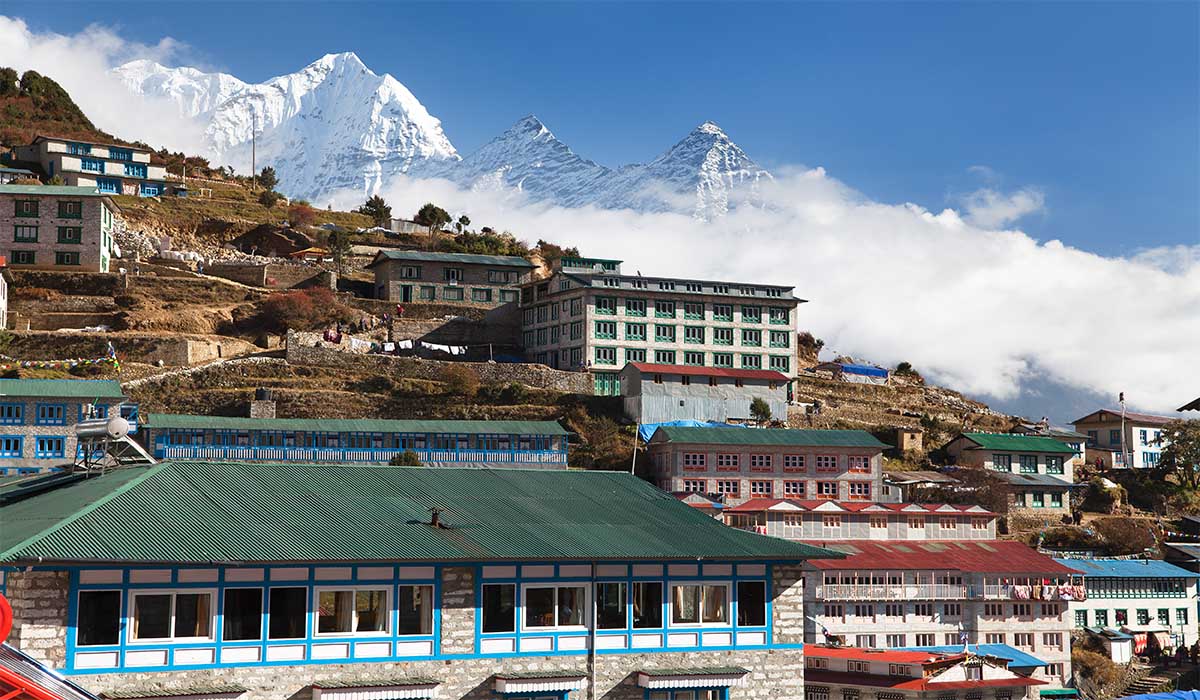
Can You Do a Short Everest Base Camp Trek Under 10 Days?
Trekking Everest Base Camp under 10 days is indeed possible. The fact is that experts often use this itinerary. You may also complete the Everest Base Camp 10 days trek comfortably if you are already a mountaineer and have prior experience at high altitude. However, a first-time attempter of the Base Camp must understand that this itinerary often skips the most important acclimatization days. Here’s how such itineraries look like:
Typical Short EBC Trek Itinerary: 10 Days
First Day- Kathmandu to Lukla flight and Phakding trek
Second Day- Reaching the Namche Bazaar
Day 3- Namche Bazaar to Tengboche, moderate trek
Day 4- Trek to Dingboche from Tengboche
Day 5- Dingboche to Lobuche demanding trek
Day 6- Gorakshep and Everest Base Camp trek
Day 7- Reach Kala Patthar, then descend down to Pheriche
Day 8- Pheriche to Tengboche trek
Day 9- Trek from Tengboche to Namche Bazaar
Final Day- Trek from Namche Bazaar to Lukla and back to Kathmandu

Benefits of Choosing the Short Everest Base Camp Trek
Choosing short Everest Base Camp Trek can be surprisingly rewarding for people with a limited time or busy schedule. This allows trekkers to experience the greatness of the Himalayas quickly. You'll love this shorter version if you are an adventurer who is fit and experienced enough to take on the challenges. Such trekkers find this a thrilling, authentic and memorable experience.
The trip doesn't miss the vital experiences. Travelers effectively explore the Sherpa culture and local villages. It will particularly appeal to those who seek adrenaline-packed experiences on the Everest shade.
Risks of Choosing the EBC 10 Days Itinerary
The short EBC trek is filled with challenges and potential threats that must be carefully considered. Rapid ascent increases the risk of serious altitude-related illness. They can appear unexpectedly and grow rapidly in areas of high altitude. The pace must be higher for conquering the EBC in 10 days. That’s why very little spaceis left for comfort or gradual acclimatization. And ultimately, it increases acute physical and mental stress on hikers.
The limited time also reduces the chances of soaking completely in the wonderful natural scenes and local culture. The trip can even feel heavy and stressful. Moreover, it potentially compromises safety standards for those who are not sufficiently prepared. Therefore, following a short Everest Base Camp trek duration may not be effective and virtuous if you aren’t backed up by strong preparation and caution on challenges.

Extended Everest Base Camp Trek – 12 to 14 Days for Acclimatization and Side Trips
Not all trekkers have the same fitness and taste. Some want more relaxed speed or a deeper experience. For such cases, the extended Everest Base Camp 14 days or 12 days trek is recommended. These travel programs have enough time for gradual acclimatization and reduce the risk of altitude sickness.
Besides, they also provide an opportunity to enjoy more of Himalayan landscape. Trekkers can explore more alternative side trips, such as the breathtaking Gokyo Lake, challenging Cho La Pass or scenic Renjo La Pass. These provide unique variation in the journey and a fulfilling experience.
There are several more advantages of taking the extended Everest Base Camp trek. A few extra days transform the trip into a safe and more engaging adventure. Trekkers can stroll leisurely through Sherpa villages, linger at panoramic viewpoints and also capture luxurious images without hurry. Trekkers in the extended trip often have the time for additional morning walks around the peaceful villages and monasteries.
All these factors overall make the trip safe and rewarding and completely immersive. This trip is hence ideal for those who want to experience Everest region fully and continuously.
Everest Base Camp Heli Tour vs Trekking
A helicopter tour dramatically accelerates your Everest adventure. You can witness a magnificent perspective of glaciers, high peaks and curved valleys and quickly land near Everest Base Camp. This option is just perfect for those wanting an immediate reward or a trouble-free experience of Everest Base Camp. With this service, you can reach the Base Camp in just a few hours from the city of Nepal where you are residing. Generally an Everest Base Camp helicopter tour from Kathmandu takes 4-5 hours for a round trip.
However, trekking allows you to slowly immerse yourself in the atmosphere of the wonderful Himalayas. You constantly walk through cool villages, thick forests and sparkling rivers. The climb to a higher height is gradual. Along the way, you can carefully experience Sherpa people’s culture, calmly enjoy the landscape and naturally acclimatize. Trekking really rewards you physically and mentally, offering a deep sense of achievement that a helicopter cannot repeat.
In short, a helicopter trip makes the Everest Base Camp trek duration fast and fleeting, while trekking is undeniably rich, deeply memorable, and safe. Your choice depends on your time, endurance, budget, and desire for authentic adventure.
How Weather Impacts Everest Base Camp Trek Duration

When we talk about the high-altitude weather, it is always unpredictable. It changes often and may also result in trek delays. This especially happens when one chooses an unideal time to trek to Everest Base Camp. That’s why trekkers are recommended to find an appropriate season to travel here. Below is in detail about how the Everestweather impacts trek duration:
Lukla Flight Delays
Flights to Lukla are always exciting but also totally thrilling. Here, the small airstrip is surrounded by huge mountain peaks. Landing of the flights in this airstrip is as challenging as the views are rewarding. Due to this, weather must be stable for the flights to land and take off from here.
Now, when the weather conditions are not good enough, it can result in flight's delay or even cancellation. Even a little fog, strong wind or sudden rain can completely disrupt the program. Trekkers often wait for flights for hours and sometimes even for days when this happens.
Trek Speed Delay
As said before, the weather in the Everest region can surprisingly change in an instant. A clear morning changes into a sudden cloud and soft winds can get stronger within minutes. Snowfall or rain can make the footpaths dangerously slippery and force the hikers to walk more carefully and slowly. Even the brighter sun at high altitude can quickly drain the energy, which slows down the progress.
The thin air combined with cold wind often deliberately reduces the trekking speed. Trekkers should relax more, stay hydrated and gradually climb to safely adapt to the height. Unexpected storms, frozen trails or heavy fog can also reduce the trekking speed.
Such incidents are more probable in the cloudy or stormy seasons. They directly affect the overall trekking period. A carefully planned 12-day trek can quickly expand to 14 or 15 days. Therefore, it is always ideal that a traveler keep an extra buffer day available for the trip. Without a buffer day, the trip can be stressful if such unfortunate events happen.
Everest Base Camp Trek for Beginners: What’s the Ideal Number of Days?
For first-timers, the Everest Base Camp tour can feel exciting but equally alarming as well. And it is normal to wonder how long the Everest Base Camp Trek takes if you are one.
The 12-day travel program is usually considered balanced for beginners or those who haven’t faced an exhausting trek before. This travel plan lets beginners finish the trek unhurriedly and delightfully. As mentioned before in the blog, the 10 days itinerary may not have enough time to adjust the body. So, headaches, fatigue or even altitude disease stand as risks.
Adding one or two extra acclimatization days makes the trip easier for beginners. Therefore, for new people, the ideal choice is 12 to 14 days. This longer Everest Base Camp trek duration helps beginners to complete comfortably, confidently and safely. Additionally, it also leaves a spot to enjoy adventure work without unnecessary stress.
Everest Base Camp Trekking Time by Season: Spring vs Autumn vs Winter vs Monsoon
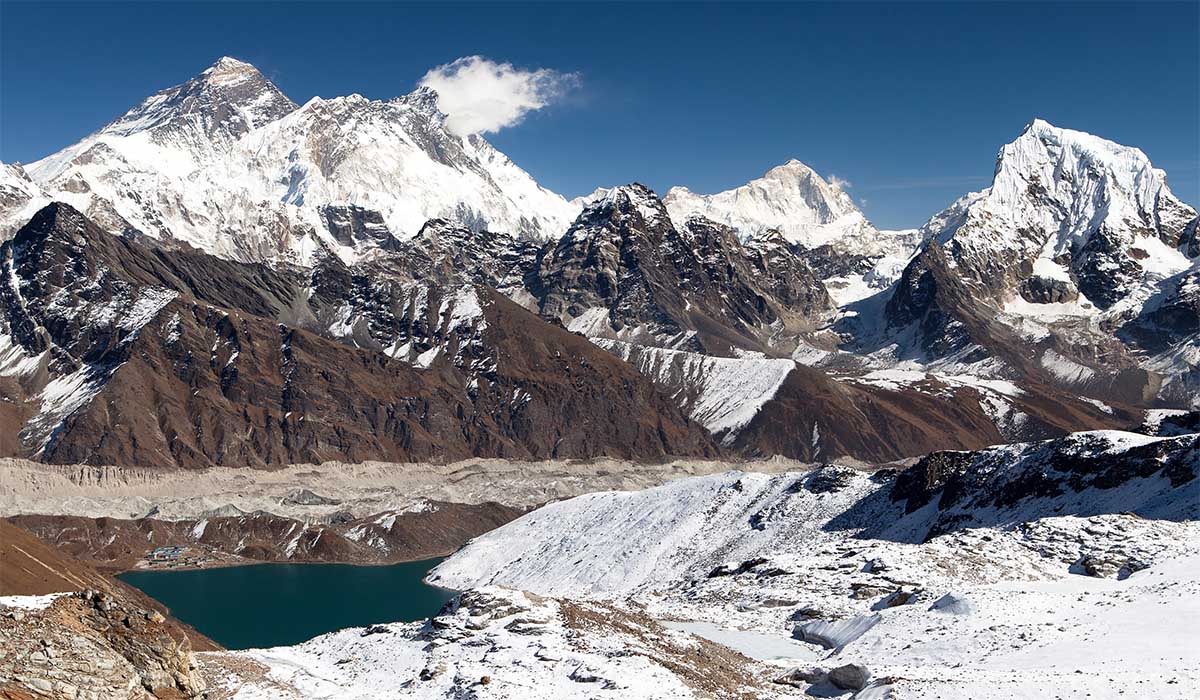
The pace adapted for trekking the Everest Base Camp may not be the same in every season. Each time presents a unique environment in Everest Region. And ultimately, each unique environment demands a unique way of journeying. The following information will help you learn more detailedly.
Trekking in Spring and Autumn
A trek lover should know beforehand that trekking is ideal in spring and autumn. These are the renowned times for stable weather and clear skies. Besides, with common similarities, both seasons have dry trails, beautiful visibility and mild temperatures. This assists trekkers to complete their trek with the minimum natural difficulties.
However, there are factors that can slow the trek. Spring is the climbing season in the Everest region. So, the trail is likely to get crowded with the expeditioners along with trekkers. Likewise, autumn is undoubtedly one of the best times to trek Everest Base Camp. This invites a large volume of trekkers in the region itself. This overcrowding might delay the Everest base camp trekking journey by forcing the trekkers to wait long in steep and narrow sections.
Trekking in Winter and Monsoon
Winter knowingly brings shorter daylight, harsh cold and heavy snowfall. These conditions demand expert planning and advanced preparation to trek to base camp comfortably. Starting early is difficult due to extreme cold and reaching after the daylight hours can be troublesome. Many teahouses may be closed due to cold. Moreover, the heavy snow on trail often slows the trek speed. Due to all these factors, trekking in winter requires a day or two more than that of the spring and autumn.
Monsoon brings slippery trails and difficult trailing conditions. Certain sections may require careful walking and mindful decisions. Some parts may also be obstructed by landslide. This may result trekkers to wait until it is re-maintained. Therefore, a monsoon trek to Everest Base Camp must have some additional days or buffer days in the itinerary to cover these unexpected delays.
How Long Do the Side Trips Add to Your Journey? Gokyo Lakes, Three Passes and Others
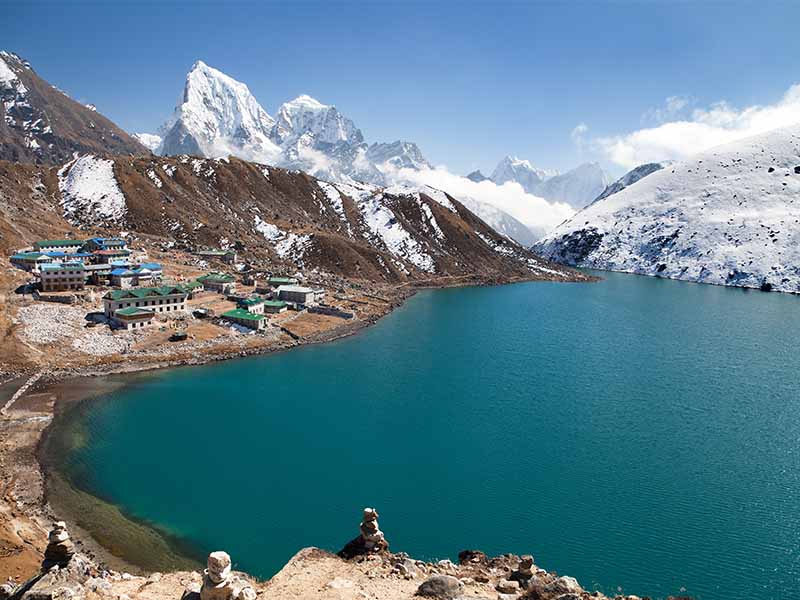
Everest region has a lot of options for side trips. But it is also the fact that they increase the trekking journey. So, in order to visit these side trips, trekkers must plan the additional time. The journey to each added side trip feels different, showing new valleys, new lakes and views of the new landscapes. Here are the details on how much each side trip affects the duration of the trip.
Gokyo Lakes Trek Extension
Gokyo Lakes side trip usually adds another 3 to 4 days. The route leaves the main Everest Base Camp trek and climbs quietly into the Gokyo Valley. Trekkers trek through peaceful Sherpa villages and wide valleys on the way. Finally, they reach a series of greenish-blue lakes, which are hidden quietly under the world's sixth-highest summit, Cho Oyu.
The climb to Gokyo Ri (5,357 m) is often called one of the best approaches in Khumbu. Everest, Lhotse, Makalu, and Cho Oyu all appear superb from the top. The Gokyo extension feels cool, with low crowds. This makes it a favorite for those who want extra beauty without much audience.
Everest Three Pass Trek Extension
The Three Pass route is the most adventurous add-on. Likely, it adds 5 to 7 more days. Each pass is difficult, with steep climbing and enduring sections. And it amazingly loops through the Renjo La, Cho La and Kongma La, which are over 5,000 meters each. But once you reach there, the unimaginably wider and jaw-dropping views make all the effort worthwhile. The peaks spread endlessly in all directions and the feeling of standing over the valleys feels intensely rewarding.
The tour also visits Gokyo Valley, Everest Base Camp and Kala Patthar. This makes it the most complete route in Khumbu. In short, all three extensions are challenging, but they deeply satisfy the trekkers who will soak in the experience pursued by themselves.
Other Extensions
Everest region offers a lot of detours and not every one is long. Some add just 1 to 2 days to the itinerary and are still enriching and rewarding. A visit to the Ama Dablam is an ideal detour. Already popular as one of the most beautiful mountains of Nepal, this peak visit rewards trekkers with breathtaking views and memorable moments.
The Chhukung Ri near Dingboche is another ideal side trip. It will add just a day and also assist the trekkers with the acclimatization. Besides the close-up view of the massive Lhotse Wall it provides are truly stunning. Hikes to Khumbu Glacier viewpoints also offer fresh perspectives of Everest itself.












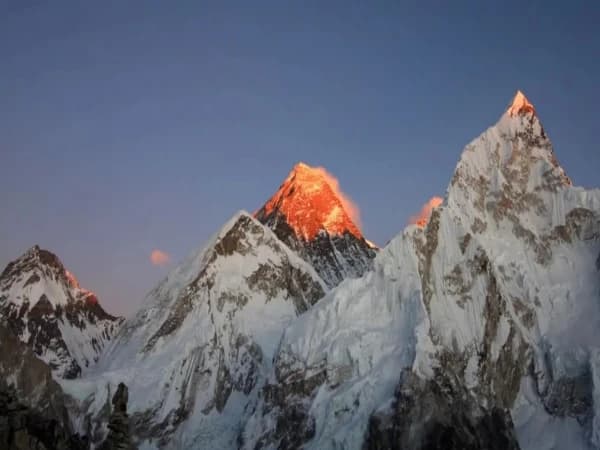
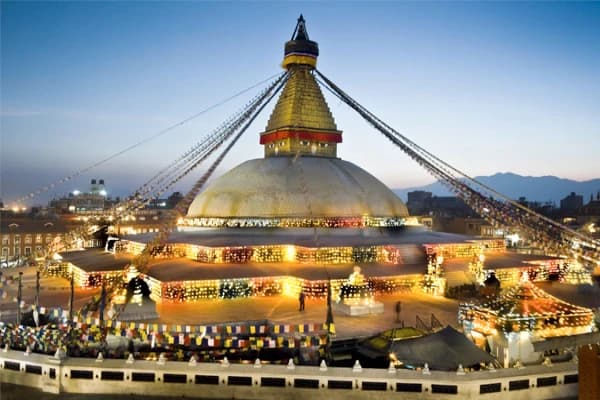
-(5).webp&w=1200&q=75&dpl=dpl_CtNAyRzUAwPdWKDCFxYk5p2VryPh)
